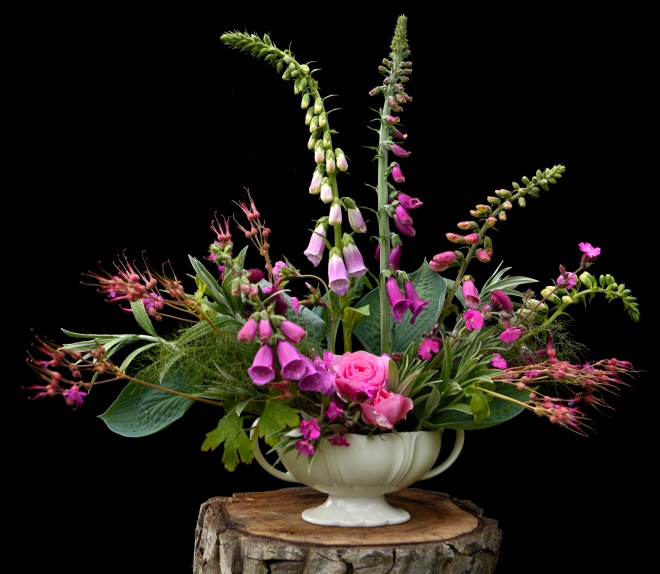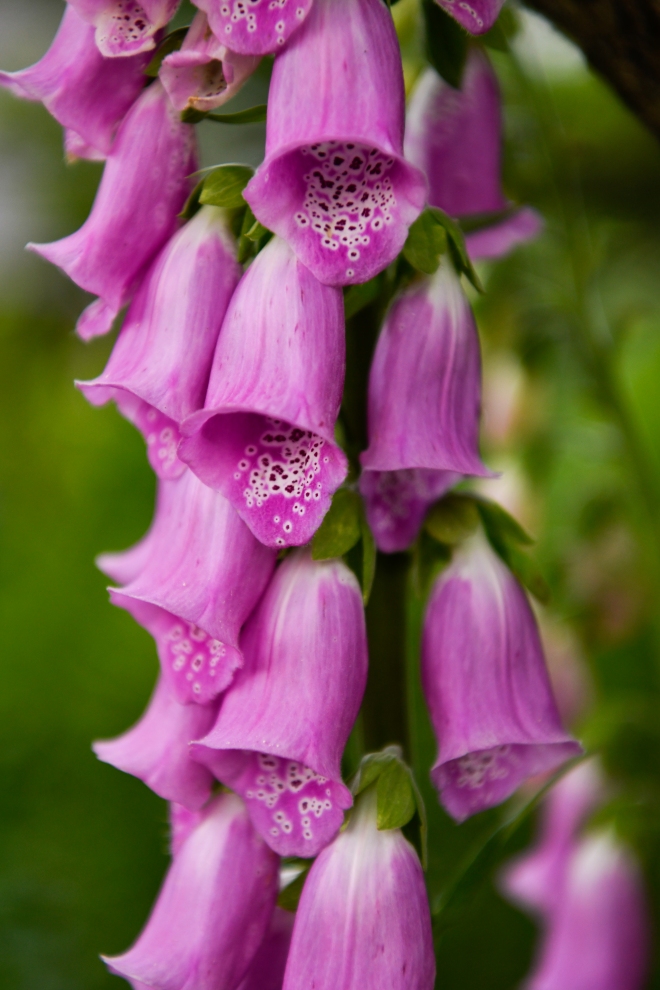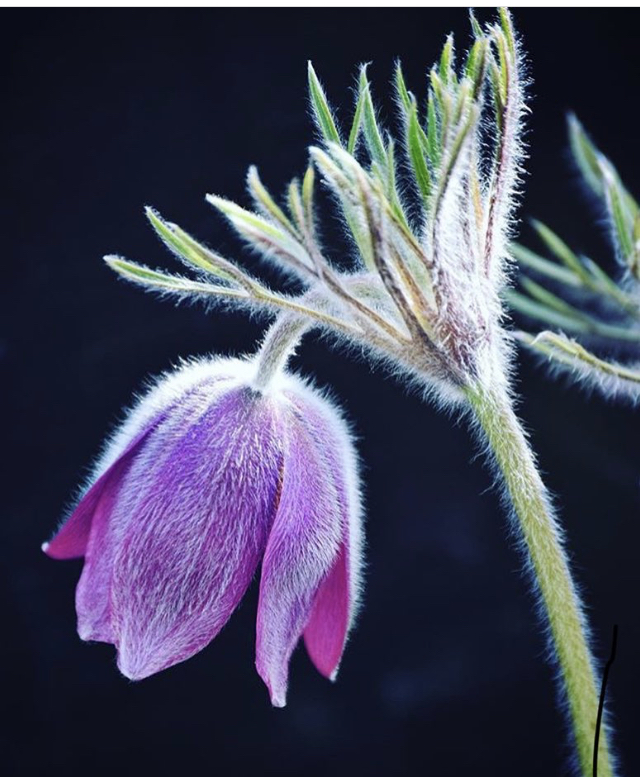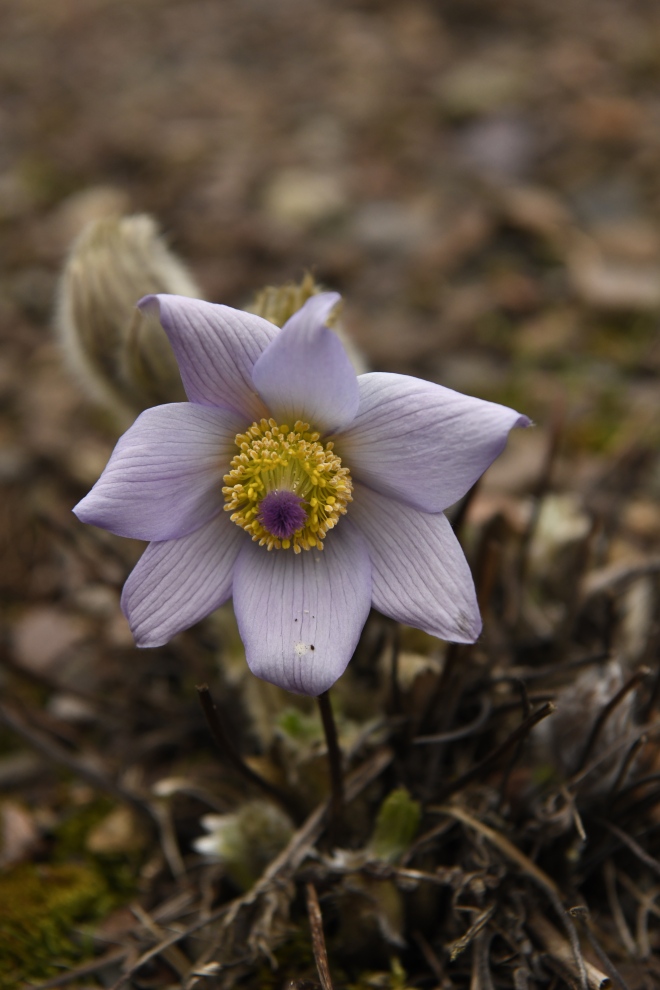Early Summer Floral Design
Here is a Constance Spry inspired arrangement featuring early Summer plants grown in Scotland for you to try.

Foxglove – Digitalis purpurea (mixed hybrids)
Foxgloves are incredible statuesque flowers at their best grown in a woodland setting. They put on a dazzling display in early summer each year and come in a range of colours from soft pinks, white and apricot shades. They are a biennial plant meaning they put on a rosette of leaves in the first year, followed by flowers in the second. It is best to harvest the seed once ripe and sow in March each year and keep a succession of plants growing. Note the seed requires light to germinate so never cover the seed when sowing into a seed tray. Alternatively let them seed themselves around in areas of your garden. The flowers are loved by bumble bees and they they do best in humus- rich, moist well drained soil in shade or semi shade. The name Digitalis means finger or digit as the flowers are thimble like in appearance. It is also important to note that all parts of Foxgloves are actually poisonous both to us and animals. Despite this Foxgloves are used in modern medicine as a heart stimulant drug.

Rose – Rosa ‘Alan Titchmarsh’
What is summer without Roses in your floral creations. This soft pink Rose is just irresistible and desirable in your summer garden flowering in June. They like full sun in fertile humus-rich soil and it is best each Spring to feed them with well rotted manure and your own compost to keep them in peak condition. Dead heading Roses is an important process to encourage more flowers. Each flowering stem can be cut back as far as three sets of leaves. The amount you cut back controls, to some extent, the shape and size of your plant.

Cirsum rivulare “Atropurpureum’
The plume thistle is a tall crimson, flowering herbaceous perennial of about 2 metres which looks handsome in the middle of a herbaceous or mixed border. It does best in full sun on moist well drained soil, however it can tolerate some dryness and partial shade. If you find the plant starting to self seed and become an issue you can cut back the seed head in the Autumn. It is also easy to collect the seed and grow from seed. I love it in a garden and so do the bees they are always all over it when it is flowering.

Hosta ‘Blue Jay’
There is nothing quite like the blue foliage of certain Hostas. The wonderful thing about blue Hostas is that slugs and snails tend to prefer the green forms to eat rather than the blue. This will mean fewer munched and hole ridden Hostas in your garden. Prized for their foliage they also have flowers that appear in lilac or white during July and some can even be scented. Place in a light- or semi-shaded position and Hostas are very hardy so they’ll thrive even in a north-facing garden or frost pocket. They are ideal for a rain garden or pond area, and can also be grown successfully in containers.
Red Campion – Silene dioica
This dainty native wildflower has pink flowers that are known for brightening our roadsides, hedgerows and woodland edges in early summer each year just after the bluebells have gone over. The flowers are also a good source of food for moths, bees and butterflies. They flower in May and June and do best in semi shade and are tolerant of most soils. You can sow the seed from March – October.
Geranium macrorrhizum
One of my favourite hardy Geraniums which has attractive delicate pink flowers. These flowers appear on long stems with protruding anthers and pistil. They grow well in full sun but can also thrive in shade. With a spreading habitat it is best to divide this herbaceous perennial every 3 – 5 years and feed with an organic mulch each Spring. Bees also love this plant and once it has finished flowering it is a good idea to dead head using your shears to encourage a second flush later in the summer.





